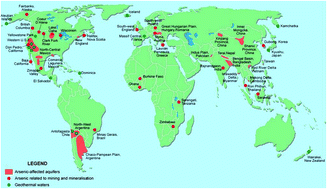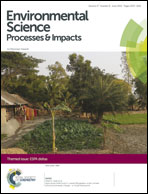A review of arsenic and its impacts in groundwater of the Ganges–Brahmaputra–Meghna delta, Bangladesh
Abstract
Arsenic in drinking water is the single most important environmental issue facing Bangladesh; between 35 and 77 million of its 156 million inhabitants are considered to be at risk from drinking As-contaminated water. This dominates the list of stress factors affecting health, livelihoods and the ecosystem of the delta region. There is a vast literature on the subject so this review provides a filter of the more important information available on the topic. The arsenic problem arises from the move in the 1980s and 1990s by international agencies to construct tube wells as a source of water free of pathogens, groundwater usually considered a safe source. Since arsenic was not measured during routine chemical analysis and also is difficult to measure at low concentrations it was not until the late 1990s that the widespread natural anomaly of high arsenic was discovered and confirmed. The problem was exacerbated by the fact that the medical evidence of arsenicosis only appears slowly. The problem arises in delta regions because of the young age of the sediments deposited by the GBM river system. The sediments contain minerals such as biotite which undergo slow “diagenetic” reactions as the sediments become compacted, and which, under the reducing conditions of the groundwater, release in the form of toxic As3+. The problem is restricted to sediments of Holocene age and groundwater of a certain depth (mainly 30–150 m), coinciding with the optimum well depth. The problem is most serious in a belt across southern Bangladesh, but within 50 m of the coast the problem is only minor because of use of deep groundwater; salinity in shallow groundwater here is the main issue for drinking water. The Government of Bangladesh adopted a National Arsenic Policy and Mitigation Action Plan in 2004 for providing arsenic safe water to all the exposed population, to provide medical care for those who have visible symptoms of arsenicosis. There is as yet no national monitoring program in place. Various mitigation strategies have been tested, but generally the numerous small scale technological remedies have proved unworkable at village level. The current statistics show that use of deep groundwater (below 150 m) is the main source of arsenic mitigation over most of the arsenic affected areas as well as rainwater harvesting in certain location.


 Please wait while we load your content...
Please wait while we load your content...